Extended Finite Element Method —— for Fracture Analysis of Structures
----- 扩展有限元法:结构断裂分析
Dedication. Preface . Nomenclature . Chapter 1 Introduction. 1.1 ANALYSIS OF STRUCTURES. 1.2 ANALYSIS OF DISCONTINUITIES. 1.3 FRACTURE MECHANICS. 1.4 CRACK MODELLING. 1.4.1 Local and non-local models. 1.4.2 Smeared crack model. 1.4.3 Discrete inter-element crack. 1.4.4 Discrete cracked element. 1.4.5 Singular elements. 1.4.6 Enriched elements. 1.5 ALTERNATIVE TECHNIQUES. 1.6 A REVIEW OF XFEM APPLICATIONS. 1.6.1 General aspects of XFEM. 1.6.2 Localisation and fracture. 1.6.3 Composites. 1.6.4 Contact. 1.6.5 Dynamics. 1.6.6 Large deformation/shells. 1.6.7 Multiscale. 1.6.8 Multiphase/solidification. 1.7 SCOPE OF THE BOOK. Chapter 2 Fracture Mechanics, a Review. 2.1 INTRODUCTION. 2.2 BASICS OF ELASTICITY. 2.2.1 Stress-strain relations. 2.2.2 Airy stress function. 2.2.3 Complex stress functions. 2.3 BASICS OF LEFM. 2.3.1 Fracture mechanics. 2.3.2 Circular hole. 2.3.3 Elliptical hole. 2.3.4 Westergaard analysis of a sharp crack. 2.4 STRESS INTENSITY FACTOR, K . 2.4.1 Definition of the stress intensity factor. 2.4.2 Examples of stress intensity factors for LEFM. 2.4.3 Griffith theories of strength and energy. 2.4.4 Brittle material. 2.4.5 Quasi-brittle material. 2.4.6 Crack stability. 2.4.7 Fixed grip versus fixed load. 2.4.8 Mixed mode crack propagation. 2.5 SOLUTION PROCEDURES FOR K AND G . 2.5.1 Displacement extrapolation/correlation method. 2.5.2 Mode I energy release rate. 2.5.3 Mode I stiffness derivative/virtual crack model. 2.5.4 Two virtual crack extensions for mixed mode cases. 2.5.5 Single virtual crack extension based on displacement decomposition. 2.5.6 Quarter point singular elements. 2.6 ELASTOPLASTIC FRACTURE MECHANICS (EPFM). 2.6.1 Plastic zone. 2.6.2 Crack tip opening displacements (CTOD). 2.6.3 J integral. 2.6.4 Plastic crack tip fields. 2.6.5 Generalisation of J . 2.7 NUMERICAL METHODS BASED ON THE J INTEGRAL. 2.7.1 Nodal solution. 2.7.2 General finite element solution. 2.7.3 Equivalent domain integral (EDI) method. 2.7.4 Interaction integral method. Chapter 3 Extended Finite Element Method for Isotropic Problems. 3.1 INTRODUCTION. 3.2 A REVIEW OF XFEM DEVELOPMENT. 3.3 BASICS OF FEM. 3.3.1 Isoparametric finite elements, a short review. 3.3.2 Finite element solutions for fracture mechanics. 3.4 PARTITION OF UNITY. 3.5 ENRICHMENT. 3.5.1 Intrinsic enrichment. 3.5.2 Extrinsic enrichment. 3.5.3 Partition of unity finite element method. 3.5.4 Generalised finite element method. 3.5.5 Extended finite element method. 3.5.6 Hp-clouds enrichment. 3.5.7 Generalisation of the PU enrichment. 3.5.8 Transition from standard to enriched approximation. 3.6 ISOTROPIC XFEM. 3.6.1 Basic XFEM approximation. 3.6.2 Signed distance function. 3.6.3 Modelling strong discontinuous fields. 3.6.4 Modelling weak discontinuous fields. 3.6.5 Plastic enrichment. 3.6.6 Selection of nodes for discontinuity enrichment. 3.6.7 Modelling the crack. 3.7 DISCRETIZATION AND INTEGRATION. 3.7.1 Governing equation. 3.7.2 XFEM discretization. 3.7.3 Element partitioning and numerical integration. 3.7.4 Crack intersection. 3.8 TRACKING MOVING BOUNDARIES. 3.8.1 Level set method. 3.8.2 Fast marching method. 3.8.3 Ordered upwind method. 3.9 NUMERICAL SIMULATIONS. 3.9.1 A tensile plate with a central crack. 3.9.2 Double edge cracks. 3.9.3 Double internal collinear cracks. 3.9.4 A central crack in an infinite plate. 3.9.5 An edge crack in a finite plate. Chapter 4 XFEM for Orthotropic Problems. 4.1 INTRODUCTION. 4.2 ANISOTROPIC ELASTICITY. 4.2.1 Elasticity solution. 4.2.2 Anisotropic stress functions. 4.2.3 Orthotropic mixed mode problems. 4.2.4 Energy release rate and stress intensity factor for anisotropic. materials. 4.2.5 Anisotropic singular elements. 4.3 ANALYTICAL SOLUTIONS FOR NEAR CRACK TIP. 4.3.1 Near crack tip displacement field (class I). 4.3.2 Near crack tip displacement field (class II). 4.3.3 Unified near crack tip displacement field (both classes). 4.4 ANISOTROPIC XFEM. 4.4.1 Governing equation. 4.4.2 XFEM discretization. 4.4.3 SIF calculations. 4.5 NUMERICAL SIMULATIONS. 4.5.1 Plate with a crack parallel to material axis of orthotropy. 4.5.2 Edge crack with several orientations of the axes of orthotropy. 4.5.3 Single edge notched tensile specimen with crack inclination. 4.5.4 Central slanted crack. 4.5.5 An inclined centre crack in a disk subjected to point loads. 4.5.6 A crack between orthotropic and isotropic materials subjected to. tensile tractions. Chapter 5 XFEM for Cohesive Cracks. 5.1 INTRODUCTION. 5.2 COHESIVE CRACKS. 5.2.1 Cohesive crack models. 5.2.2 Numerical models for cohesive cracks. 5.2.3 Crack propagation criteria. 5.2.4 Snap-back behaviour. 5.2.5 Griffith criterion for cohesive crack. 5.2.6 Cohesive crack model. 5.3 XFEM FOR COHESIVE CRACKS. 5.3.1 Enrichment functions. 5.3.2 Governing equations. 5.3.3 XFEM discretization. 5.4 NUMERICAL SIMULATIONS. 5.4.1 Mixed mode bending beam. 5.4.2 Four point bending beam. 5.4.3 Double cantilever beam. Chapter 6 New Frontiers. 6.1 INTRODUCTION. 6.2 INTERFACE CRACKS. 6.2.1 Elasticity solution for isotropic bimaterial interface. 6.2.2 Stability of interface cracks. 6.2.3 XFEM approximation for interface cracks. 6.3 CONTACT. 6.3.1 Numerical models for a contact problem. 6.3.2 XFEM modelling of a contact problem. 6.4 DYNAMIC FRACTURE. 6.4.1 Dynamic crack propagation by XFEM. 6.4.2 Dynamic LEFM. 6.4.3 Dynamic orthotropic LEFM. 6.4.4 Basic formulation of dynamic XFEM. 6.4.5 XFEM discretization. 6.4.6 Time integration. 6.4.7 Time finite element method. 6.4.8 Time extended finite element method. 6.5 MULTISCALE XFEM. 6.5.1 Basic formulation. 6.5.2 The zoom technique. 6.5.3 Homogenisation based techniques. 6.5.4 XFEM discretization. 6.6 MULTIPHASE XFEM. 6.6.1 Basic formulation. 6.6.2 XFEM approximation. 6.6.3 Two-phase fluid flow. 6.6.4 XFEM approximation. Chapter 7 XFEM Flow. 7.1 INTRODUCTION. 7.2 AVAILABLE OPEN-SOURCE XFEM. 7.3. FINITE ELEMENT ANALYSIS. 7.3.1 Defining the model. 7.3.2 Creating the finite element mesh. 7.3.3 Linear elastic analysis. 7.3.4 Large deformation. 7.3.5 Nonlinear (elastoplastic) analysis. 7.3.6 Material constitutive matrix. 7.4 XFEM. 7.4.1 Front tracking. 7.4.2 Enrichment detection. 7.4.3 Enrichment functions. 7.4.4 Ramp (transition) functions. 7.4.5 Evaluation of the B matrix. 7.5 NUMERICAL INTEGRATION. 7.5.1 Sub-quads. 7.5.2 Sub-triangles. 7.6 SOLVER. 7.6.1 XFEM degrees of freedom. 7.6.2 Time integration. 7.6.3 Simultaneous equations solver. 7.6.4 Crack length control. 7.7 POST-PROCESSING. 7.7.1 Stress intensity factor. 7.7.2 Crack growth. 7.7.3 Other applications. 7.8 CONFIGURATION UPDATE. References . Index
{{comment.content}}
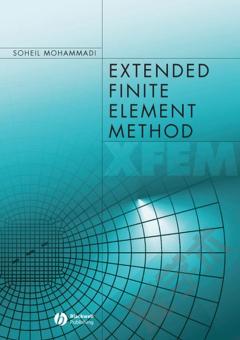
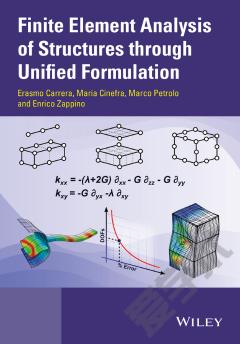
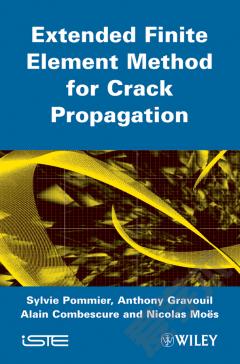


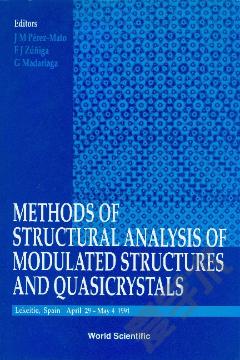
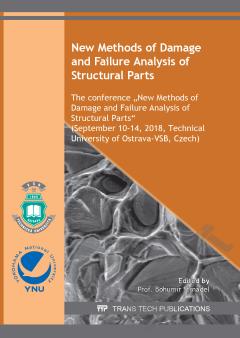

 京公网安备 11010802027623号
京公网安备 11010802027623号